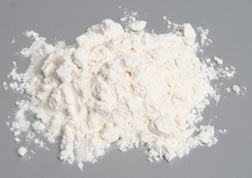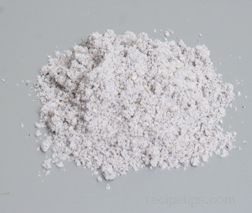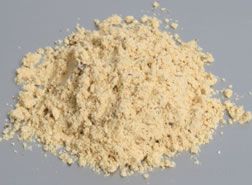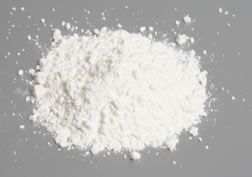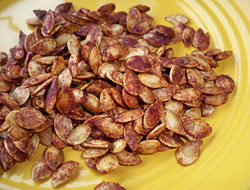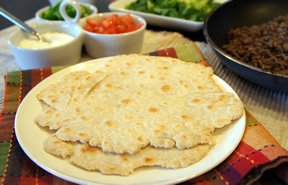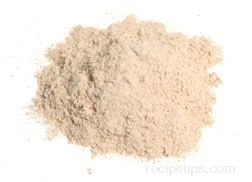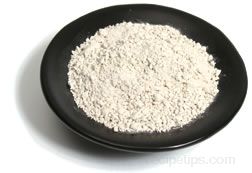|
Types of Non-Wheat Flour Ground from Seeds
There are many types of flour milled from a wide variety of seeds. Most of the seeds used for flour are also prepared and cooked similar to actual cereal grains, so many people make no distinction between grain-like seeds and actual grains because of the similar ways in which they are used. Many of the types of flour ground from seeds are described below. |
|
Amaranth Flour
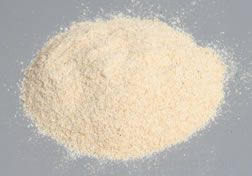 Amaranth flour is milled from the seeds obtained from the amaranth plant. The small, lens shaped seed or grain is light tan in color and provides a very mild tangy, somewhat peppery or nutty flavor, which may be quite noticeable if the flour is not combined with another flour when preparing baked foods. Amaranth flour is milled from the seeds obtained from the amaranth plant. The small, lens shaped seed or grain is light tan in color and provides a very mild tangy, somewhat peppery or nutty flavor, which may be quite noticeable if the flour is not combined with another flour when preparing baked foods.
Amaranth flour contains very minute amounts of gluten and is most often processed into a gluten-free flour product. Because of the lack of gluten, it must be added to other types of flour when preparing yeast breads. A suitable mixture contains one part of amaranth flour to three or four parts of gluten flour (such as wheat flour). It does not have to be added to other flours when preparing pastas or flatbreads. Amaranth flour can also be used as a food extender, for cookies and desserts, or it may also be added to other foods simply as a means of increasing the nutrient value. |
|
Buckwheat Flour
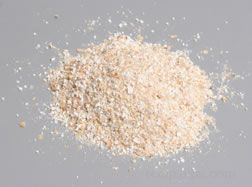 Buckwheat flour is a variety of gluten-free flour obtained by grinding the seeds of the buckwheat plant. Buckwheat flour has a slightly sour flavor and it is sometimes processed with the addition of wheat flour in order to temper the taste. Buckwheat flour is used in pancakes, waffles, blintzes, crepes, muffins, and soba noodles. Because it contains no gluten, buckwheat flour must be added to wheat flour for use in yeast breads. Even when using a small quantity in yeast breads, buckwheat flour provides a distinctive flavor to the loaf. Buckwheat flour is a variety of gluten-free flour obtained by grinding the seeds of the buckwheat plant. Buckwheat flour has a slightly sour flavor and it is sometimes processed with the addition of wheat flour in order to temper the taste. Buckwheat flour is used in pancakes, waffles, blintzes, crepes, muffins, and soba noodles. Because it contains no gluten, buckwheat flour must be added to wheat flour for use in yeast breads. Even when using a small quantity in yeast breads, buckwheat flour provides a distinctive flavor to the loaf.
|
|
Flax Seed Meal/Flour
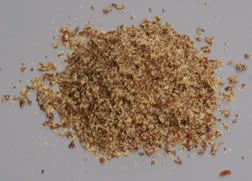 Flax seed meal is coarsely ground flax seed. It can be added to many cooked and uncooked dishes, providing texture and flavor. It can be used as a fat substitute or thickening agent in some recipes. Flax seed meal is coarsely ground flax seed. It can be added to many cooked and uncooked dishes, providing texture and flavor. It can be used as a fat substitute or thickening agent in some recipes.
Flax seed can also be ground into a course, oily flour, however it must be combined with wheat flour for baking risen breads. |
|
Millet Flour
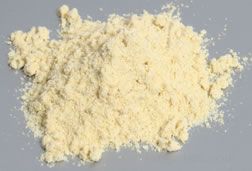 Millet was a popular food source in Europe and Asia for centuries and today it has become an important food source for developing nations in Africa. In the United States, few people regard it as anything more than a popular variety of birdseed. Millet seeds can be ground into flour, but since it is gluten free, it must be combined with high-gluten flour when used in baked goods. It adds an exceptionally sweet flavor to baked goods. Millet was a popular food source in Europe and Asia for centuries and today it has become an important food source for developing nations in Africa. In the United States, few people regard it as anything more than a popular variety of birdseed. Millet seeds can be ground into flour, but since it is gluten free, it must be combined with high-gluten flour when used in baked goods. It adds an exceptionally sweet flavor to baked goods.
|
|
Quinoa Flour
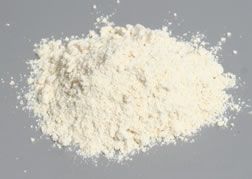 Quinoa is flour produced from grinding the quinoa seeds into a powder. It is used for making breads, biscuits, cookies, crepes, muffins, pancakes, and tortillas. Since it contains no gluten, quinoa flour must be combined with wheat flour when baking yeast breads. Quinoa is flour produced from grinding the quinoa seeds into a powder. It is used for making breads, biscuits, cookies, crepes, muffins, pancakes, and tortillas. Since it contains no gluten, quinoa flour must be combined with wheat flour when baking yeast breads.
|






 Buckwheat flour is a variety of gluten-free flour obtained by grinding the seeds of the buckwheat plant. Buckwheat flour has a slightly sour flavor and it is sometimes processed with the addition of wheat flour in order to temper the taste. Buckwheat flour is used in pancakes, waffles, blintzes, crepes, muffins, and soba noodles. Because it contains no gluten, buckwheat flour must be added to wheat flour for use in yeast breads. Even when using a small quantity in yeast breads, buckwheat flour provides a distinctive flavor to the loaf.
Buckwheat flour is a variety of gluten-free flour obtained by grinding the seeds of the buckwheat plant. Buckwheat flour has a slightly sour flavor and it is sometimes processed with the addition of wheat flour in order to temper the taste. Buckwheat flour is used in pancakes, waffles, blintzes, crepes, muffins, and soba noodles. Because it contains no gluten, buckwheat flour must be added to wheat flour for use in yeast breads. Even when using a small quantity in yeast breads, buckwheat flour provides a distinctive flavor to the loaf. Flax seed meal is coarsely ground flax seed. It can be added to many cooked and uncooked dishes, providing texture and flavor. It can be used as a fat substitute or thickening agent in some recipes.
Flax seed meal is coarsely ground flax seed. It can be added to many cooked and uncooked dishes, providing texture and flavor. It can be used as a fat substitute or thickening agent in some recipes. Millet was a popular food source in Europe and Asia for centuries and today it has become an important food source for developing nations in Africa. In the United States, few people regard it as anything more than a popular variety of birdseed. Millet seeds can be ground into flour, but since it is gluten free, it must be combined with high-gluten flour when used in baked goods. It adds an exceptionally sweet flavor to baked goods.
Millet was a popular food source in Europe and Asia for centuries and today it has become an important food source for developing nations in Africa. In the United States, few people regard it as anything more than a popular variety of birdseed. Millet seeds can be ground into flour, but since it is gluten free, it must be combined with high-gluten flour when used in baked goods. It adds an exceptionally sweet flavor to baked goods. Quinoa is flour produced from grinding the quinoa seeds into a powder. It is used for making breads, biscuits, cookies, crepes, muffins, pancakes, and tortillas. Since it contains no gluten, quinoa flour must be combined with wheat flour when baking yeast breads.
Quinoa is flour produced from grinding the quinoa seeds into a powder. It is used for making breads, biscuits, cookies, crepes, muffins, pancakes, and tortillas. Since it contains no gluten, quinoa flour must be combined with wheat flour when baking yeast breads.